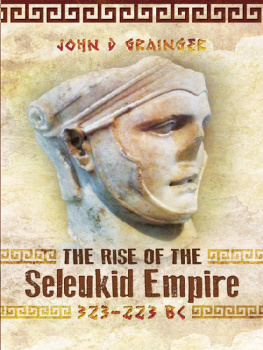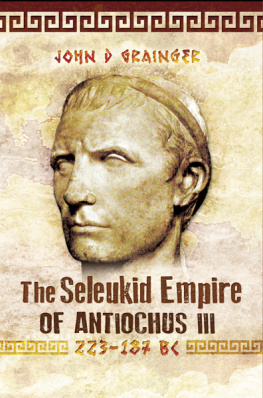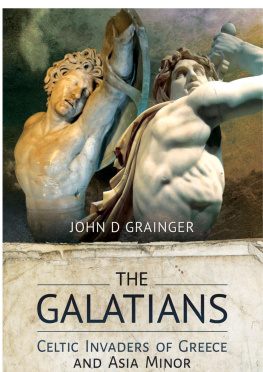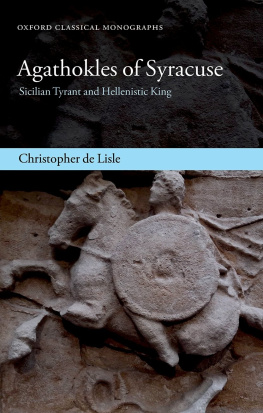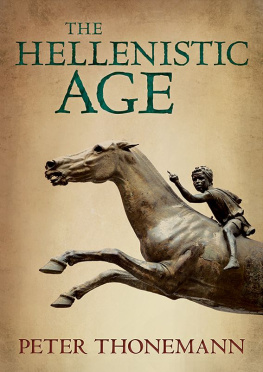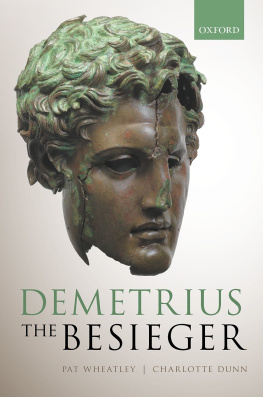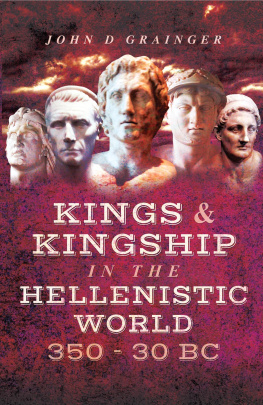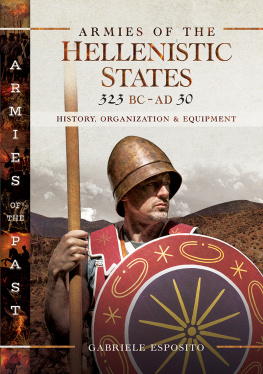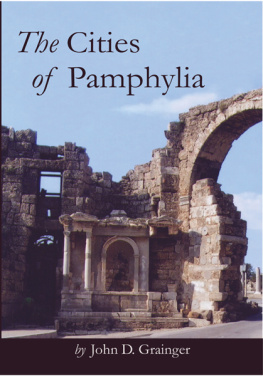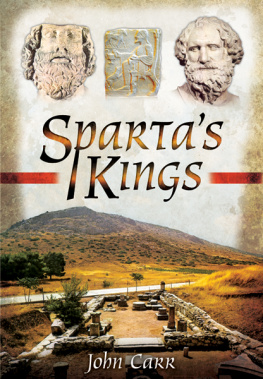First published in Great Britain in 2017 by
PEN & SWORD MILITARY
An imprint of
Pen & Sword Books Ltd
47 Church Street
Barnsley
South Yorkshire
S70 2AS
Copyright John D. Grainger, 2017
ISBN 978-1-47386-375-0
eISBN 978-1-47386-377-4
Mobi ISBN 978-1-47386-376-7
The right of John D. Grainger to be identified as the author of this work has been asserted by him in accordance with the Copyright, Designs and Patents Act 1988.
A CIP catalogue record for this book is available from the British Library.
All rights reserved. No part of this book may be reproduced or transmitted in any form or by any means, electronic or mechanical including photocopying, recording or by any information storage and retrieval system, without permission from the Publisher in writing.
Pen & Sword Books Ltd incorporates the imprints of Pen & Sword Archaeology, Atlas, Aviation, Battleground, Discovery, Family History, History, Maritime, Military, Naval, Politics, Railways, Select, Social History, Transport, True Crime, and Claymore Press, Frontline Books, Leo Cooper, Praetorian Press, Remember When, Seaforth Publishing and Wharncliffe.
For a complete list of Pen & Sword titles please contact
PEN & SWORD BOOKS LIMITED
47 Church Street, Barnsley, South Yorkshire, S70 2AS, England
E-mail:
Website: www.pen-and-sword.co.uk
Introduction
Kings, Kingdoms, Kingship
Between c. 350 BC and 30 BC the Mediterranean world was one in which kings ruled. The exceptions were some of the Greek cities and all Roman Italy and Carthaginian Africa. But for most of that period these republican areas were not central to the events in the eastern Mediterranean. For the crucial centuries between Alexander the Great and the Roman conquest of Macedon in 167, the political running was made by kings, and it is their work and lives and loves and experiences which is the subject here. Romes expansion successively extinguished a series of monarchies, and this pushed back the areas which were ruled by kings for a time, but the process of building a republican empire eventually rebounded on the city, and the Roman Empire became ruled by an emperor who was in fact a good facsimile of a Hellenistic king, right down to the personal irresponsibility and the liability to be assassinated. The Roman emperors are increasingly seen as providing the template for the kings of the Middle Ages and later, and so it was the Hellenistic kings who provided the original pattern.
In 350 BC , a date which is only partly chosen at random, there were half a dozen monarchies already in the Greek world, though most are only peripheral, both geographically and in terms of power. The greatest of course was that of the Persian Empire, where various members of the Akhaimenid dynasty had ruled as Great Kings, as the Greeks called them, for two centuries. This was a gigantic empire, but one which was curiously passive in its internal affairs, economically inert, culturally of little account; the Great Kings were content simply to hold on, and not to use their great power and wealth for any obvious purpose, certainly not for the betterment of their subjects. By 350 the empire was clearly failing, though still a major power and dangerous to its enemies. Its effect on the subsequent Hellenistic period is extremely difficult to gauge, though investigations are now tending to emphasise some influences. It remains a fact, however, that the Hellenistic kings were Greco-Macedonian in almost all respects, descent, behaviour and activity.
Three other monarchies in about 350 were small and Greek. Spartas monarchy required the simultaneous rule of two kings from different families, though in practice one of the kings usually dominated. This was not the only matter in which Sparta was different; it had recently lost half of its territory to vengeful neighbours and enemies, and it would not stop trying to get it back until well into the Roman imperial times. Macedon was a monarchy, one of a group of similar polities in the southern Balkans, reckoned by outsiders as only partly Greek; in 350 it was under the kingship of Philip II, who was turning out to be the master statesman of the age, though he had no real hereditary right to the kingship his hold on power depended on continuing success in his policies and wars, and in 350 he had made only minor progress towards his future domination of Greece, and none towards his later goal of conquering territory from the Persians. In Sicily the monarchy of Dionysios I, based at Syracuse, was visibly failing under the rule of his son, who was beset by rivals and rebels and would last only a few more years. That monarchy called by the Greeks a tyranny was a revival of an earlier monarchic version of the fifth century BC ; it would collapse in the next decade, but would be reconstituted twice in the next century and a half before being taken over by Rome (more or less as a going concern). It is often taken as a model for Hellenistic monarchy, but because of the peculiar circumstances in Sicily it was much more a home-grown thing, as individual in its way as that of Sparta. In the event it took its place comfortably enough into the system of Hellenistic monarchies, but it was also the first to fall to Rome. It therefore had little influence on the development of monarchies in the rest of the Mediterranean area.
A fourth, rather odd, monarchy was a neighbour of Macedon to the west. In 300 BC it adopted the name Epeiros, but at base it was the Molossian tribe to which neighbouring tribes had become attached, either by conquest or voluntarily, and the kings were kings of the Molossi. The polity was somewhat unstable, and the royal family tended to division and dispute, just as the kingdom was more a federation with a king on top than a typical monarchy. The kings powers were distinctly limited. In many ways it was similar to the Macedonian kingdom, but weaker, more distant and even less Hellenised. Its kings were intermarried with the Macedonian royal family, and Alexander the Great as the son of the Epeirote princess Olympias; his sister was married to Olympias brother, another Alexander. These two states provided much of the pattern for those which came after; they might be reckoned the first of the Hellenistic kingdoms.
Three more monarchies were ranged around the fringes of the Persian Empire. In the north was the Bosporan kingdom, half-Greek, half-Scythian, which was based in the eastern half of the Crimea, straddling the Kertch Straits. The dynasty which ruled there from 438, the Spartokids, was mainly Thracian in origin, though subject to much Greek cultural influence, and the kings had successfully integrated locals and Greeks into a single society. They and their kingdom had become wealthy as a trading intermediary, funnelling Scythian grain to the hungry Greek cities. The other two monarchies were fragments of the Akhaimenid Empire which had more or less broken away. In Karia, in southwest Asia Minor, was the satrapy of Mausollos, who had largely detached his province from Persian control, but had done so without angering his suzerain too much, and was able to pass on his power to his successors. His new quasi-independence was one of the strongest indications of the declining power of the Persian Empire. The other kingdom was Egypt, a perennially rebellious province of any empire ventured to conquer it. It had been independent of the Persian Empire for half a century, since 404, but would soon be reconquered, a powerful indication that the decline of the Akhaimenid monarchy was perhaps not irreversible. Egypt did not therefore seem strong enough to stand alone, despite its extremely favourable geographical situation, but it was a wealthy land and it was partly for this reason that it was attacked. The paradox was clearly a matter of internal organisation, for the country, behind its desert frontiers, was eminently defensible.


